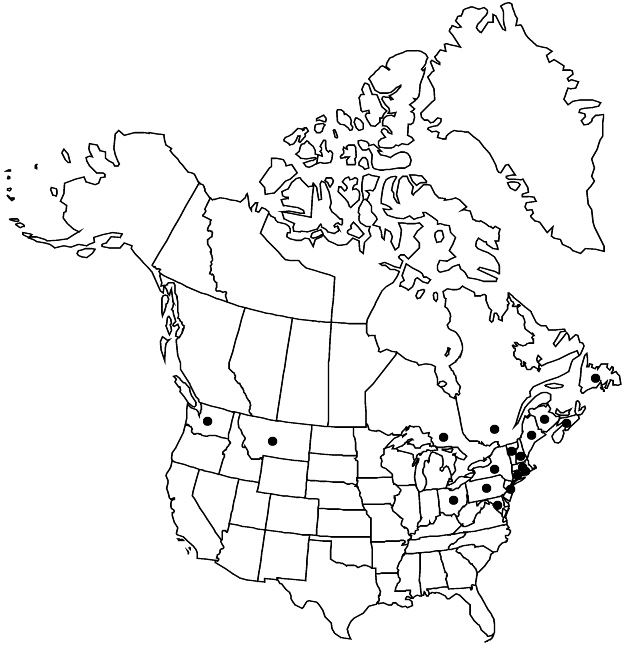Silene flos-cuculi subsp. flos-cuculi
Plants perennial; taproot slender; with branched caudex. Stems erect, nonflowering shoots decumbent, branched, 30–90 cm, with coarse deflexed hairs distally, subglabrous proximally. Leaves: blade glabrous except sometimes ciliate at base; those of proximal stem with blade oblanceolate, spatulate, 2–15 cm × 4–30 mm; those of mid and distal stem subsessile to sessile, connate at base, blade oblanceolate to narrowly lanceolate, 3–8 cm × 4–15 mm. Inflorescences cymose, open, bracteate; cyme branched, long-stalked, 3–30-flowered, compound; bracts narrowly lanceolate, 2–25 mm, apex acuminate. Pedicels 0.3–2 cm. Flowers 30–35 mm diam.; calyx prominently 10-veined, campanulate, 6–10 × 4–7 mm in fruit, submembranous, margins dentate with 5 ovate lobes ca. 3 mm, apex acuminate; petals rose pink (rarely white), clawed, claw equaling calyx, limb deeply divided into 4 spreading, linear lobes, ca. 1 cm, appendages 2, deeply forked, narrow, ca. 4 mm; stamens shortly exserted; stigmas 5, shortly exserted. Capsule broadly ovoid, equaling calyx, opening by 5 acute, revolute teeth; carpophore very short (less than 0.5 mm) or absent. Seeds dark brown to black, 0.5–0.7 mm, coarsely tuberculate; tubercules triangular, ca. as long as broad. 2n = 24.
Phenology: Flowering summer.
Habitat: Wet meadows, roadside ditches, river banks, lake shores
Elevation: 0-800 m
Distribution

N.B., Nfld. and Labr. (Nfld.), N.S., Ont., Que., Conn., Maine, Md., Mass., Mont., N.H., N.J., N.Y., Ohio, Pa., R.I., Vt., Wash., Europe.
Discussion
Selected References
None.